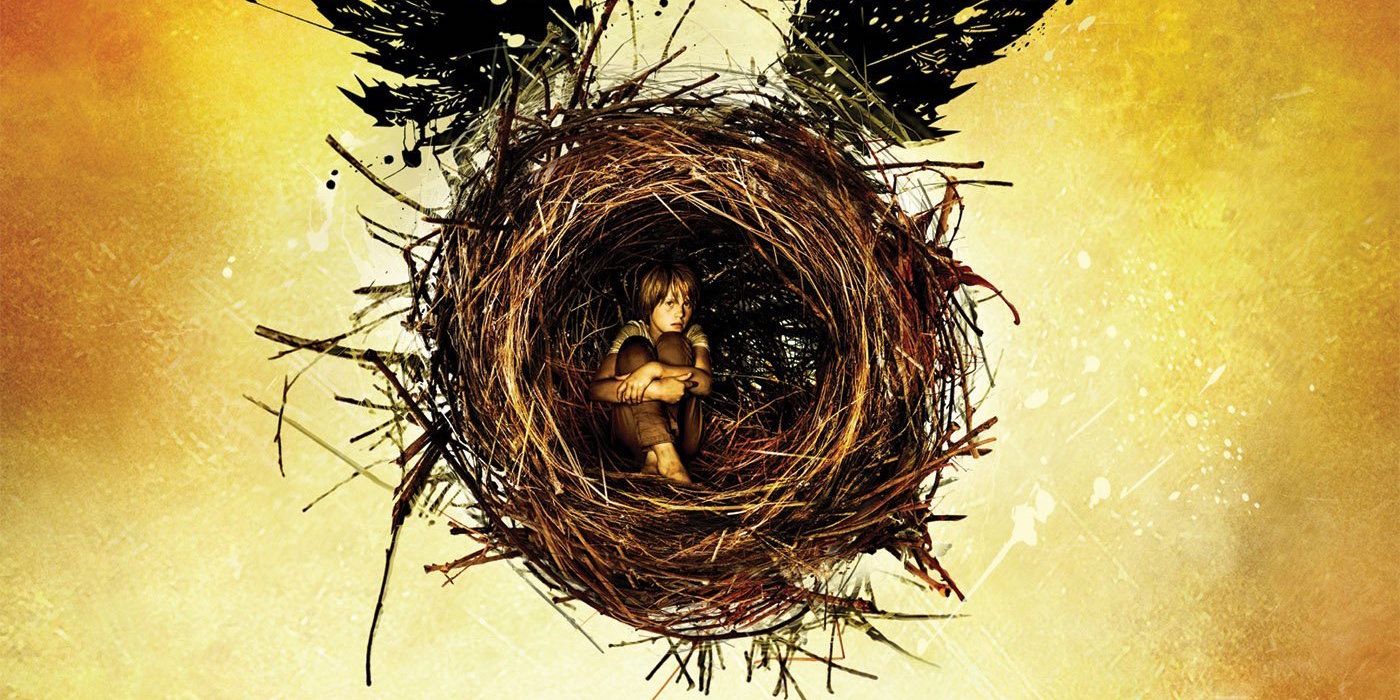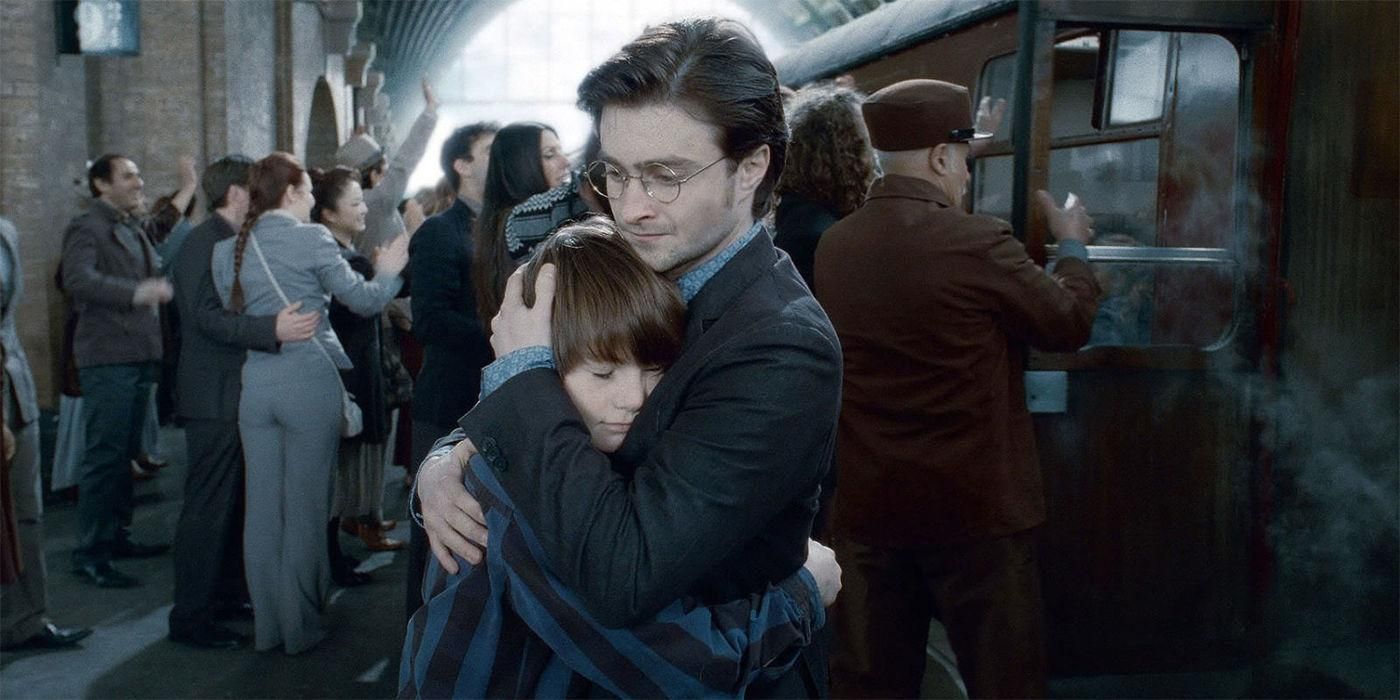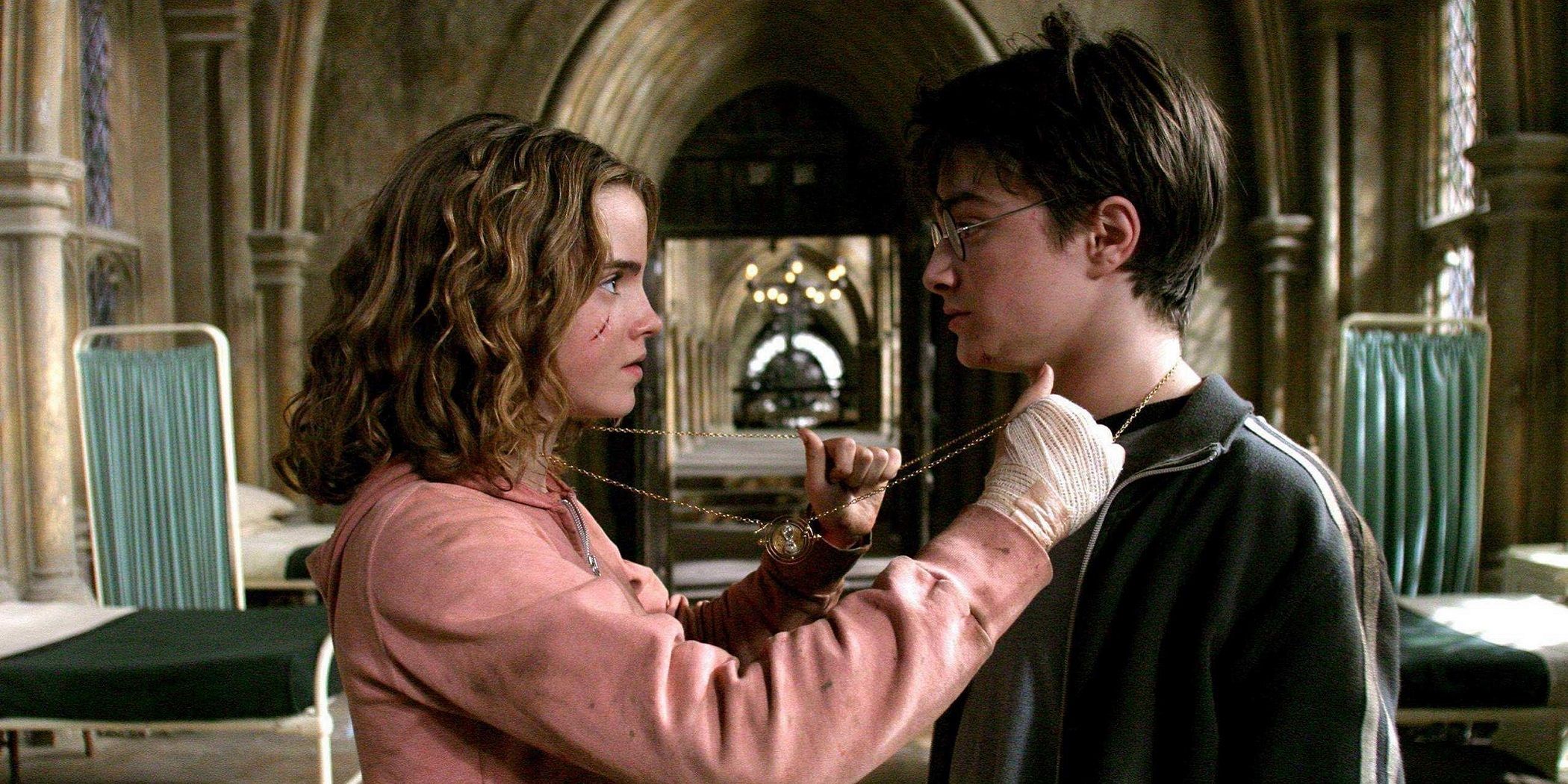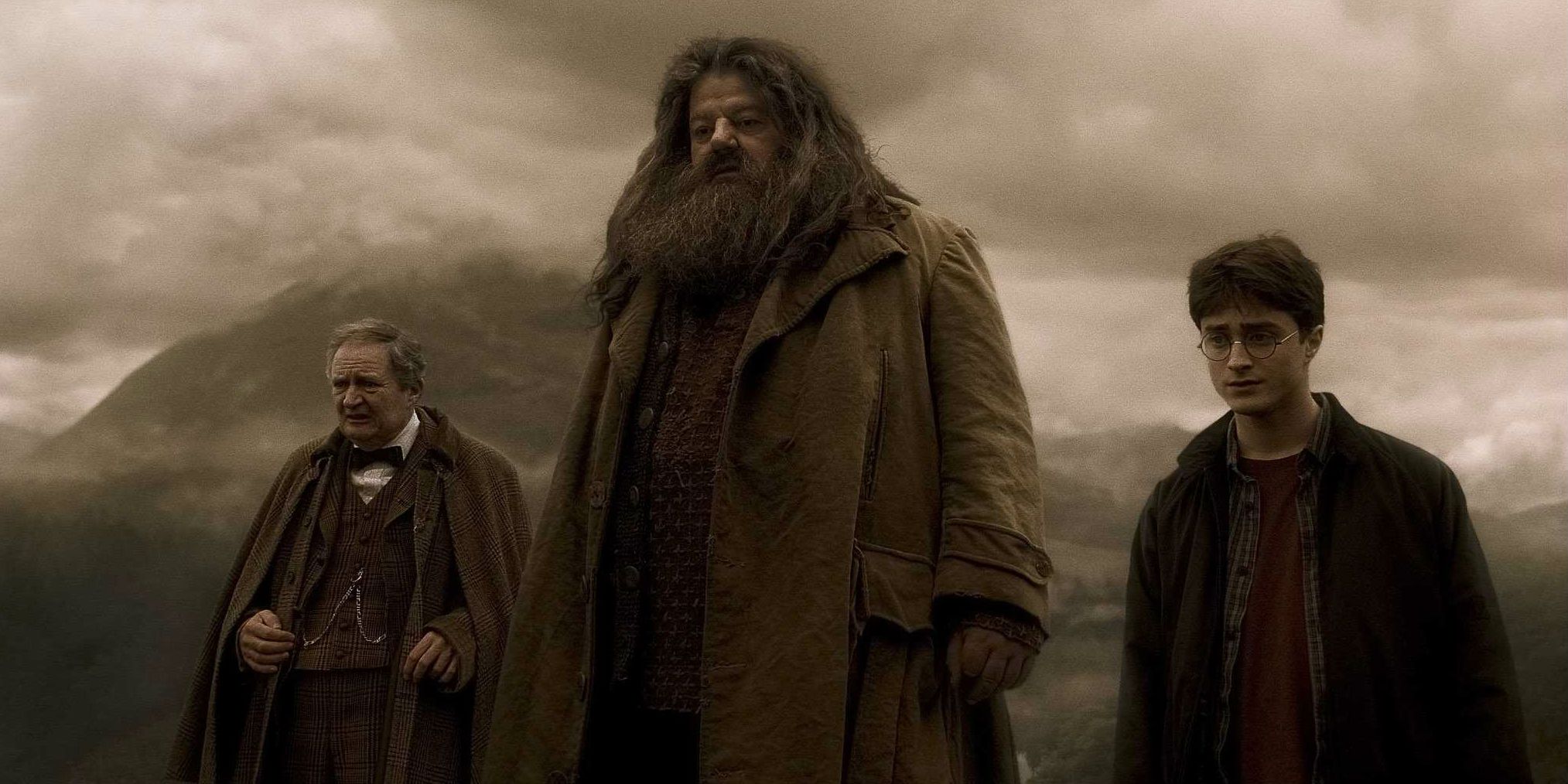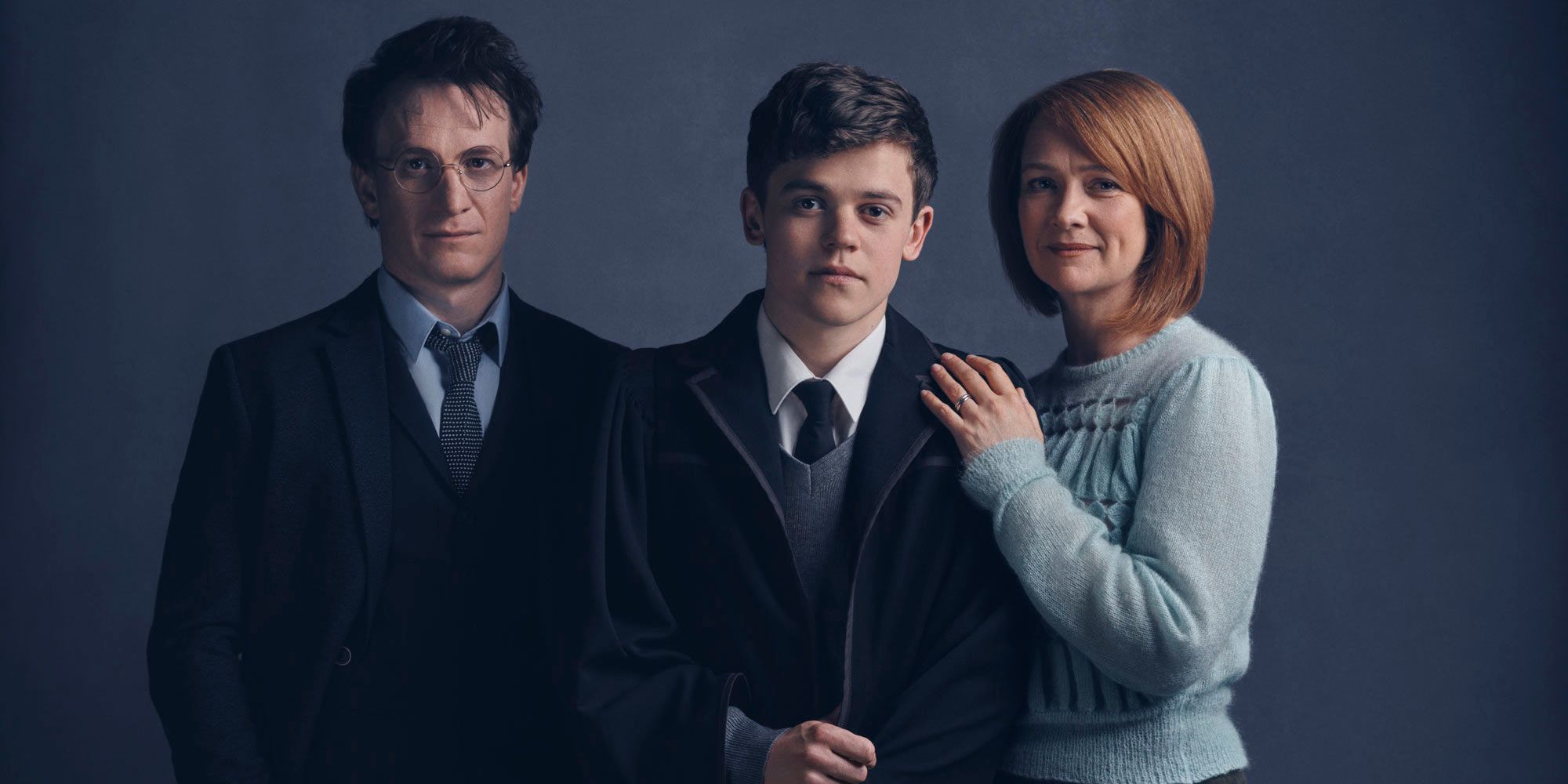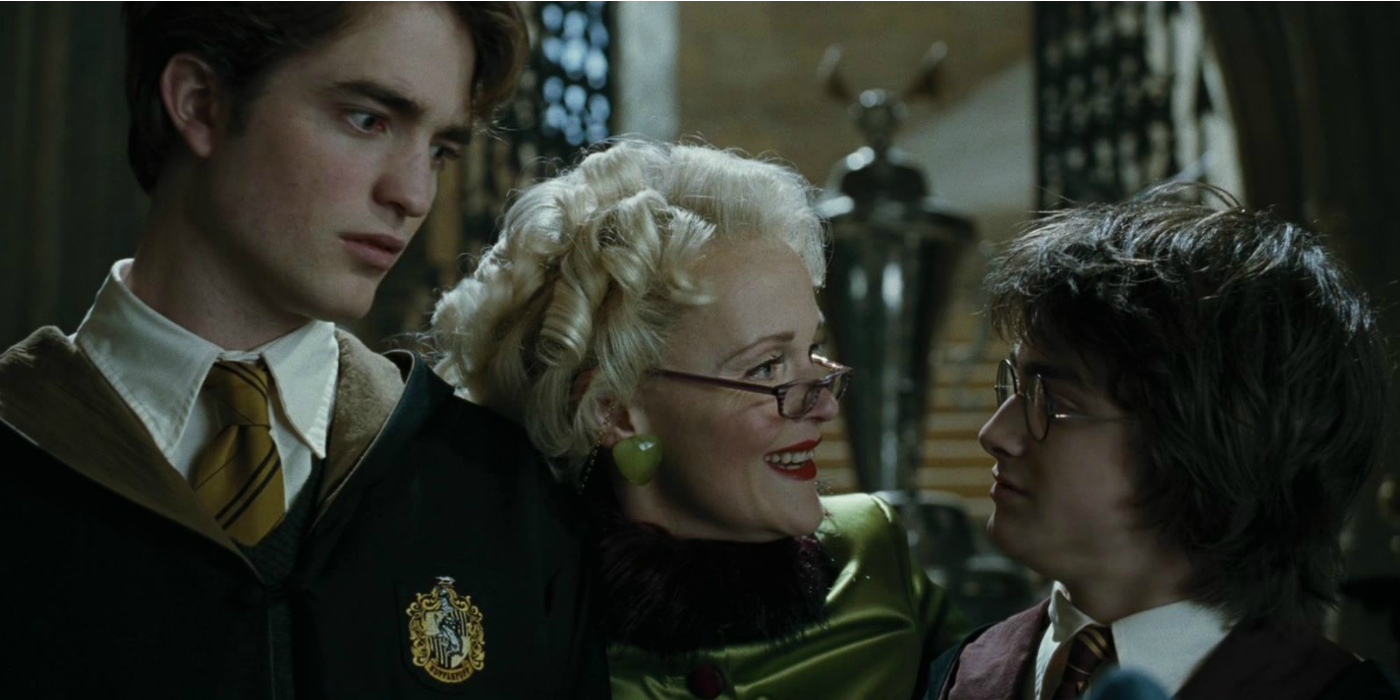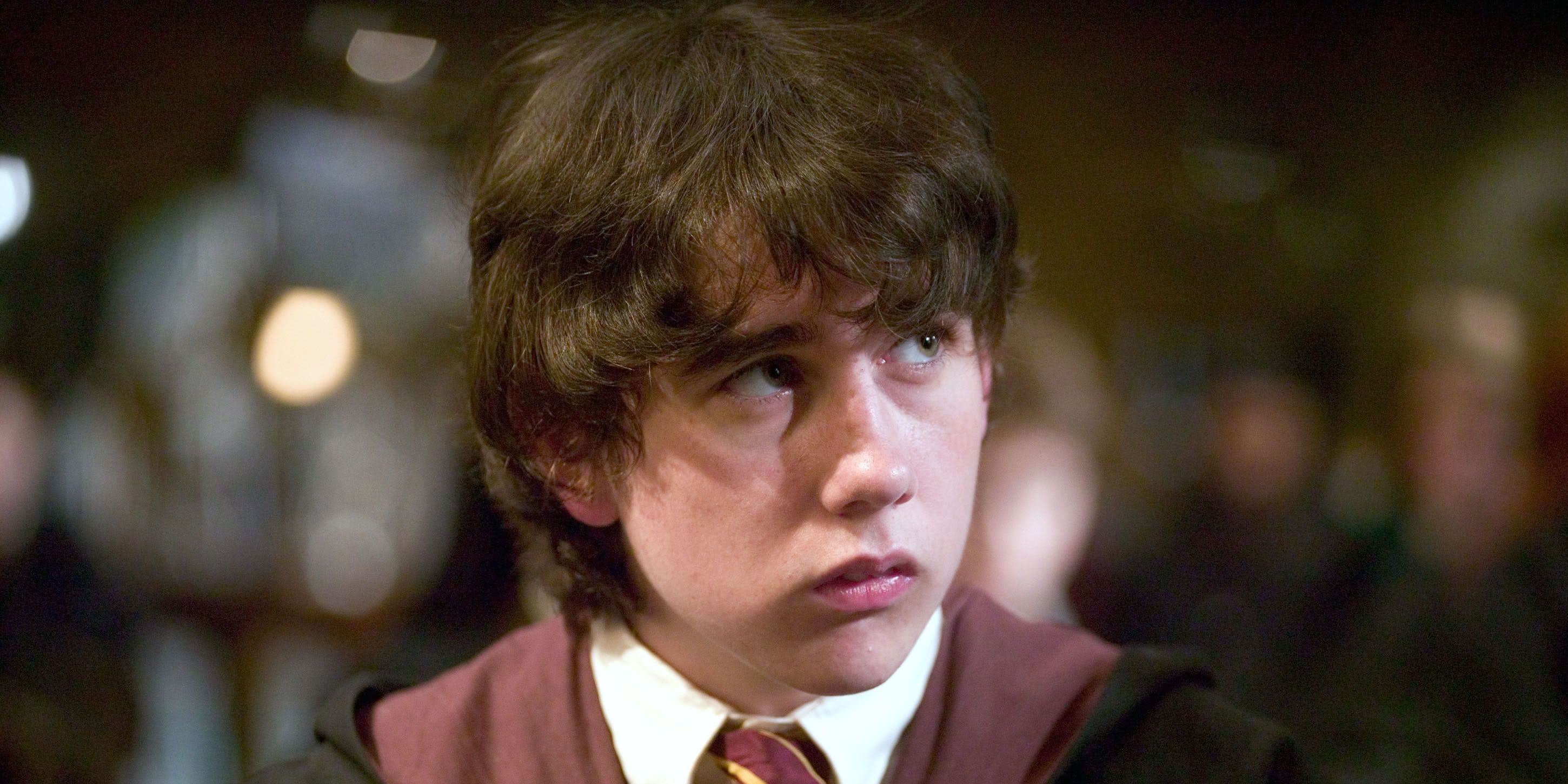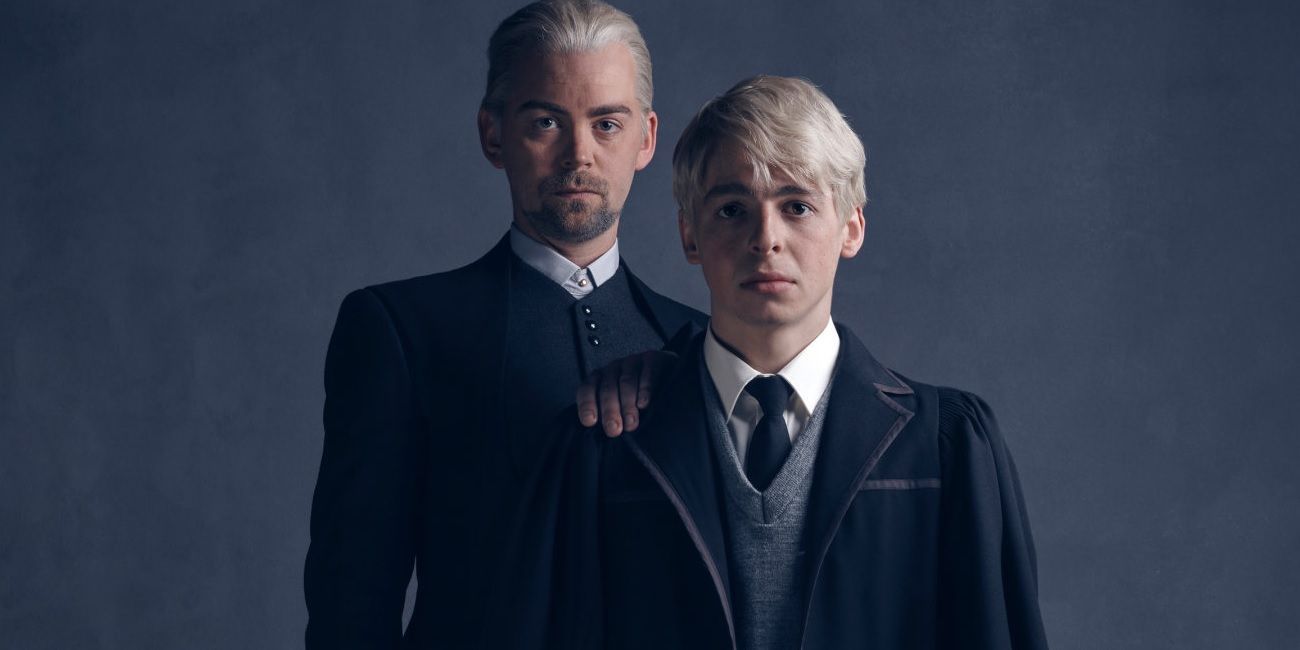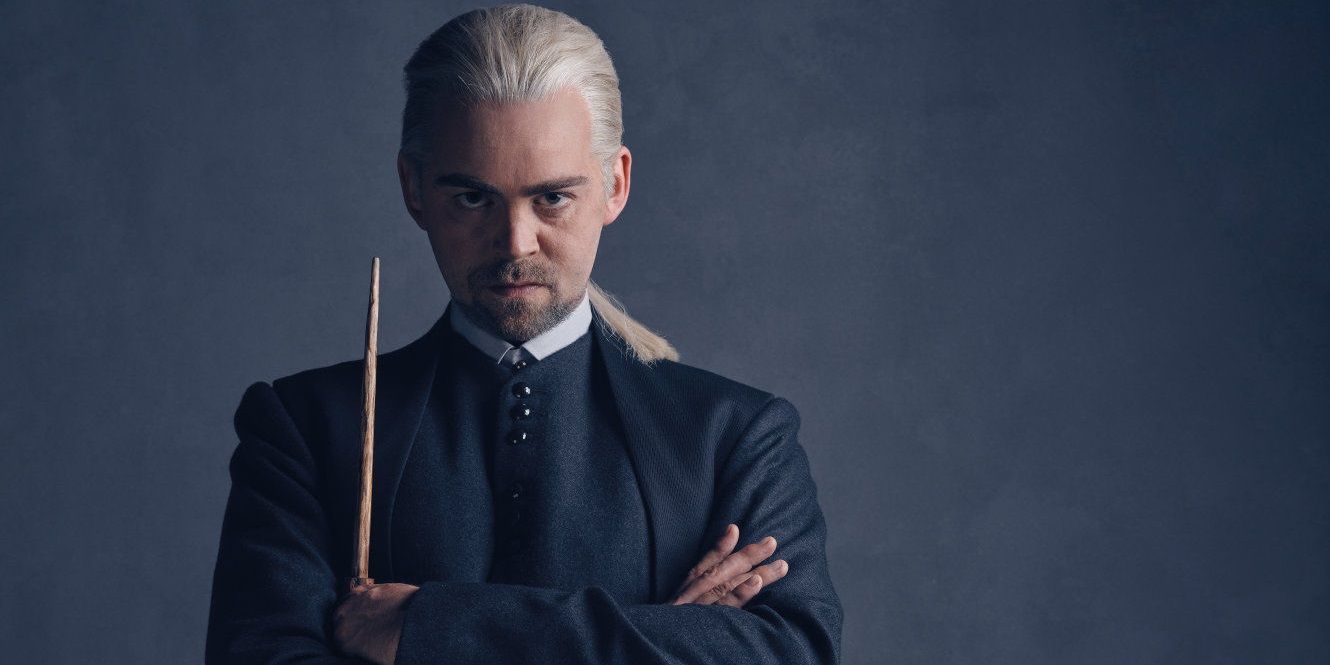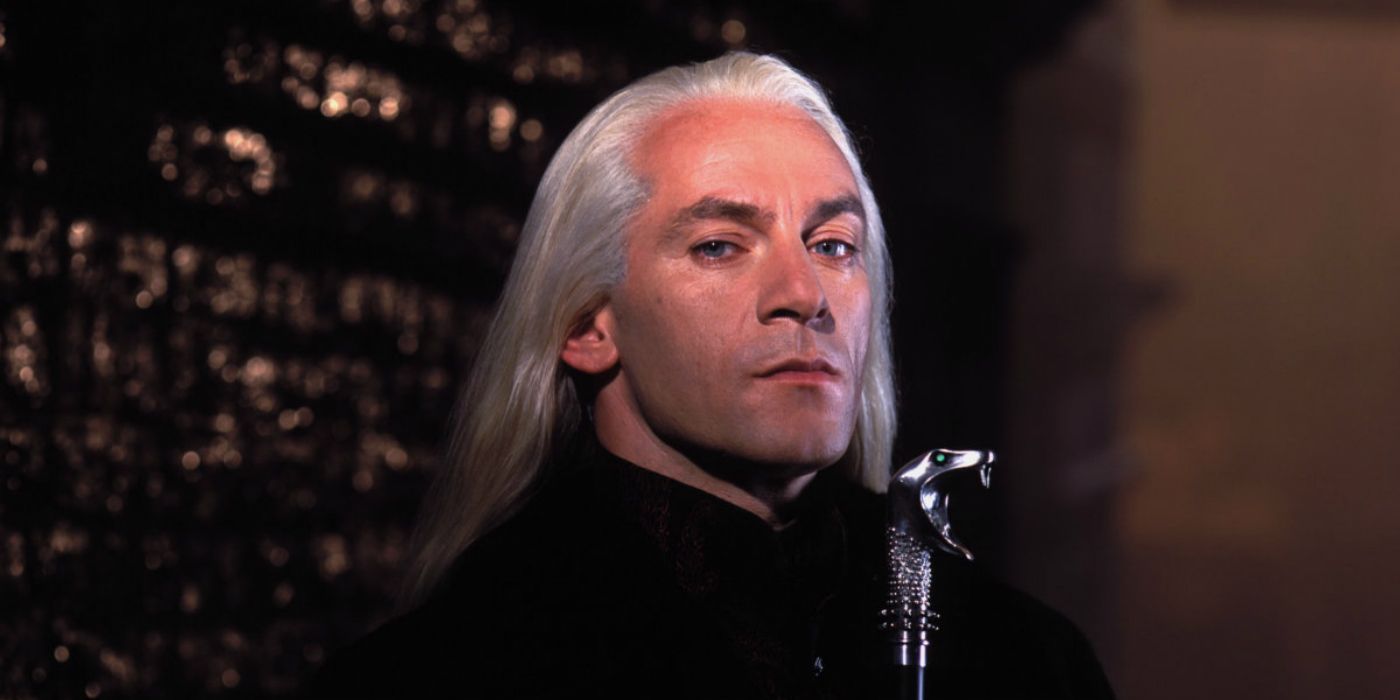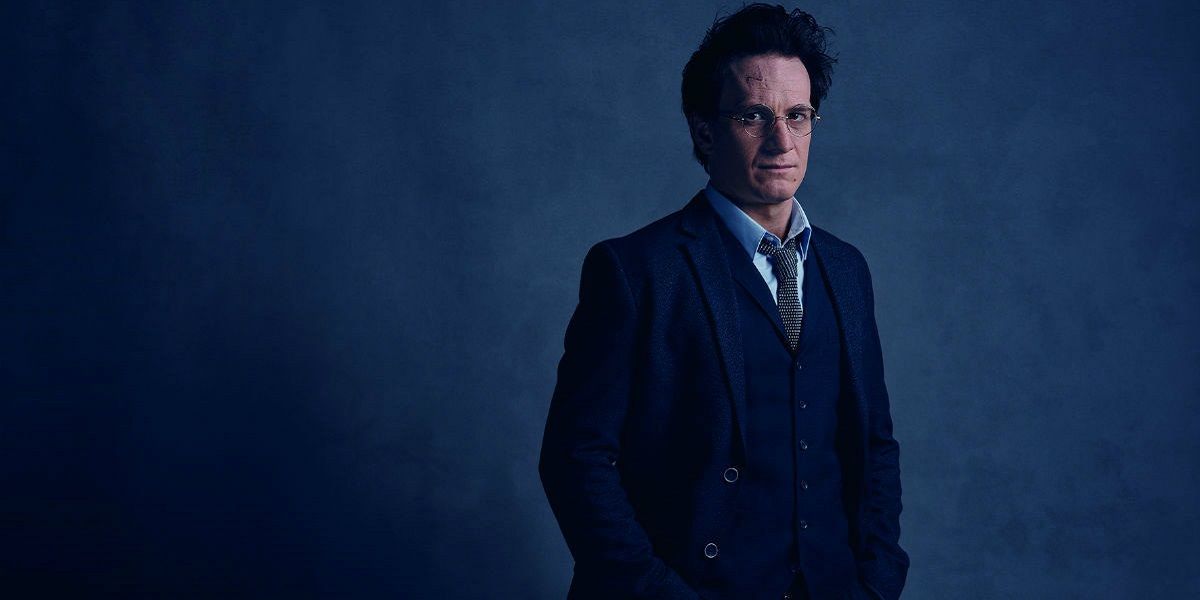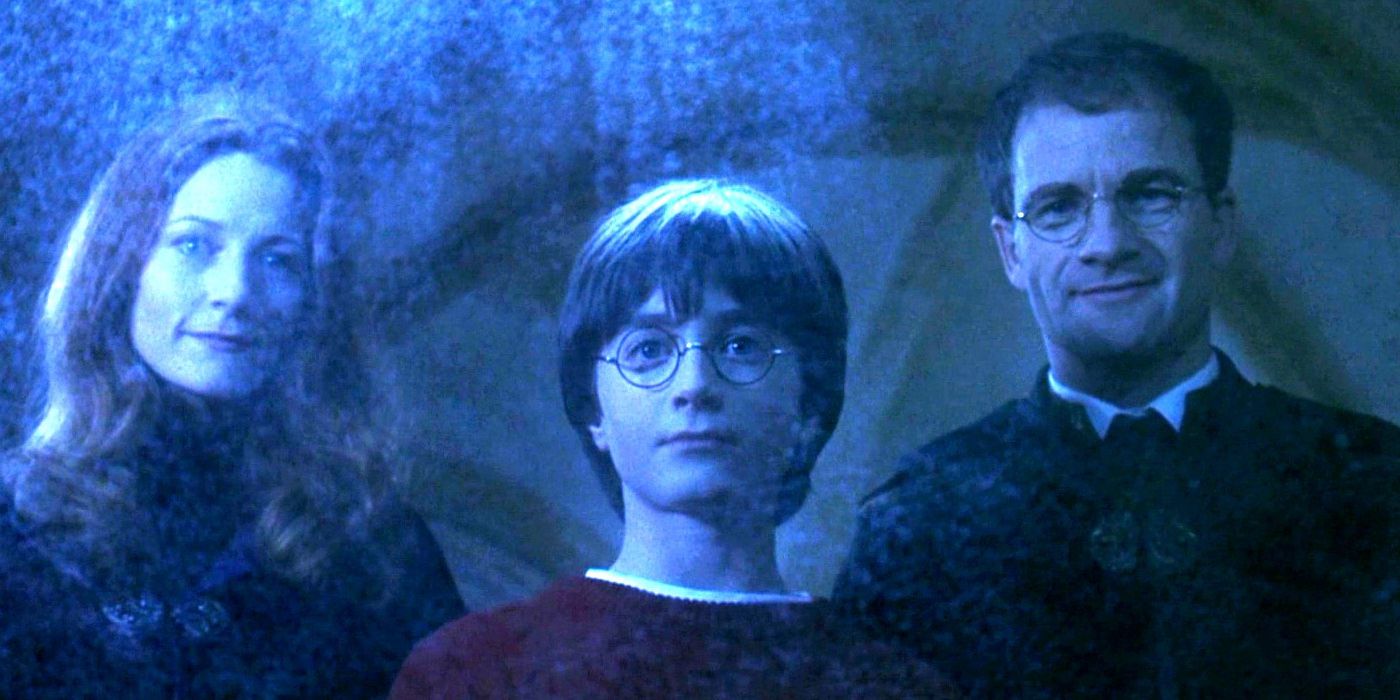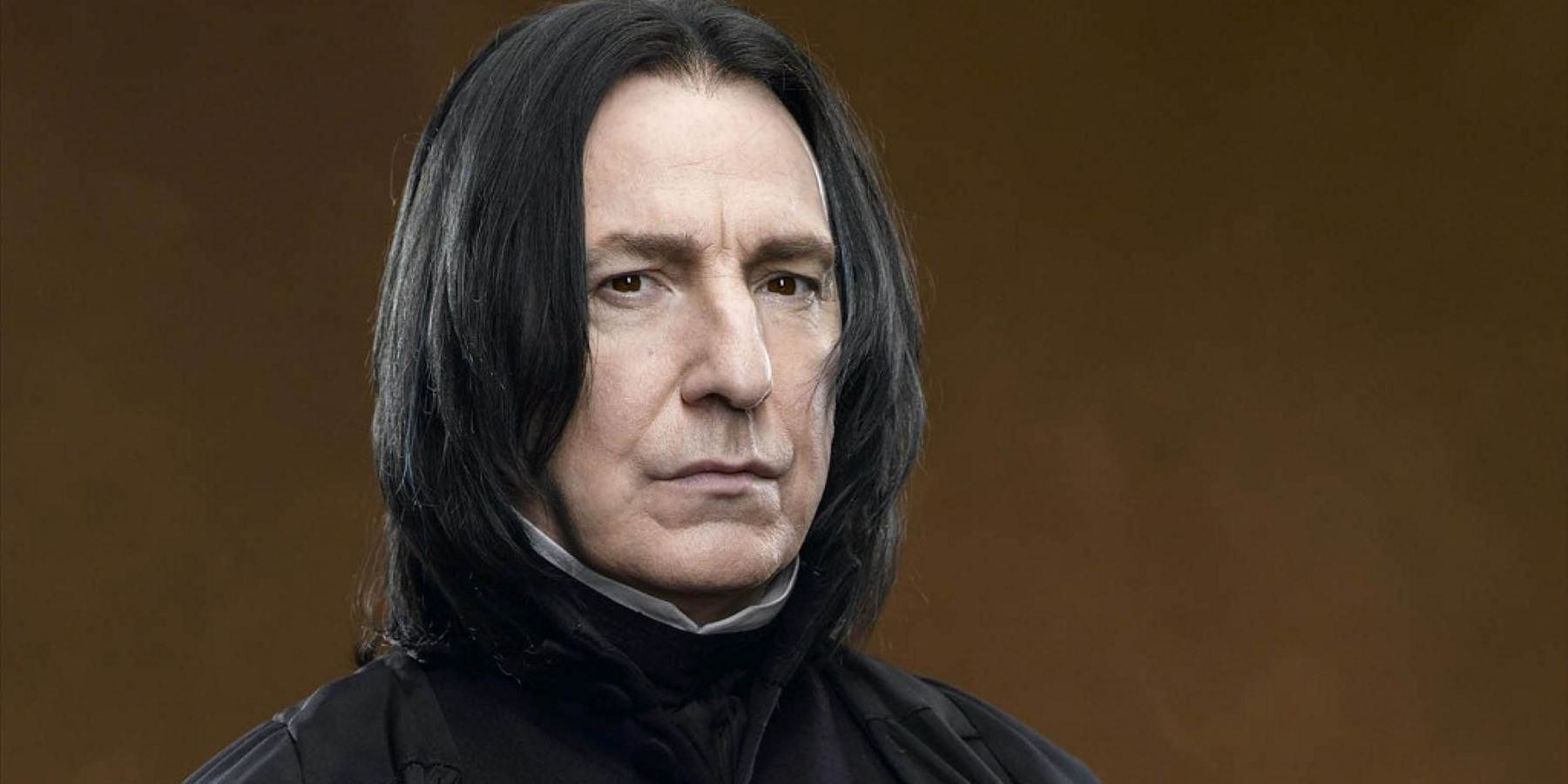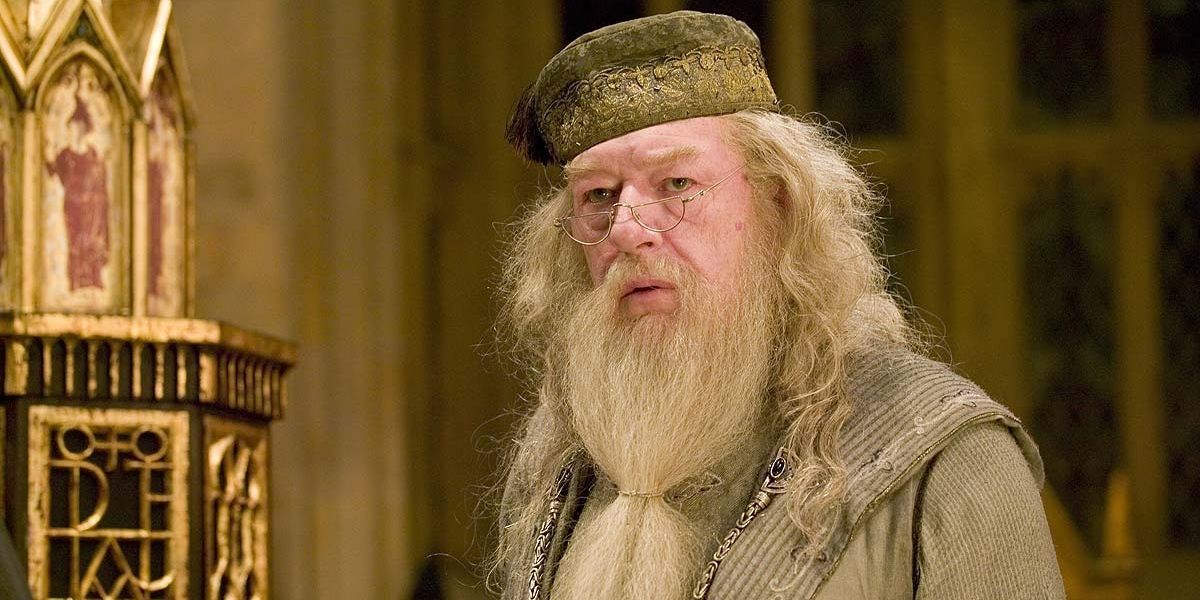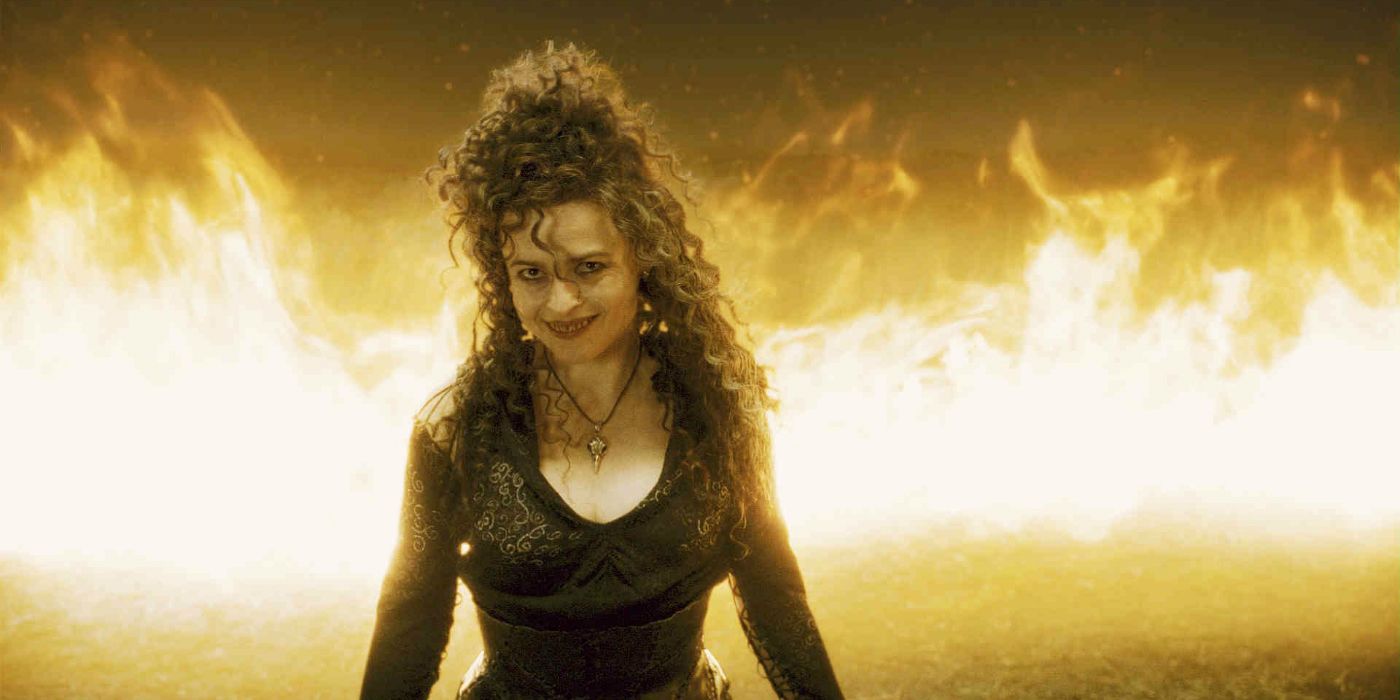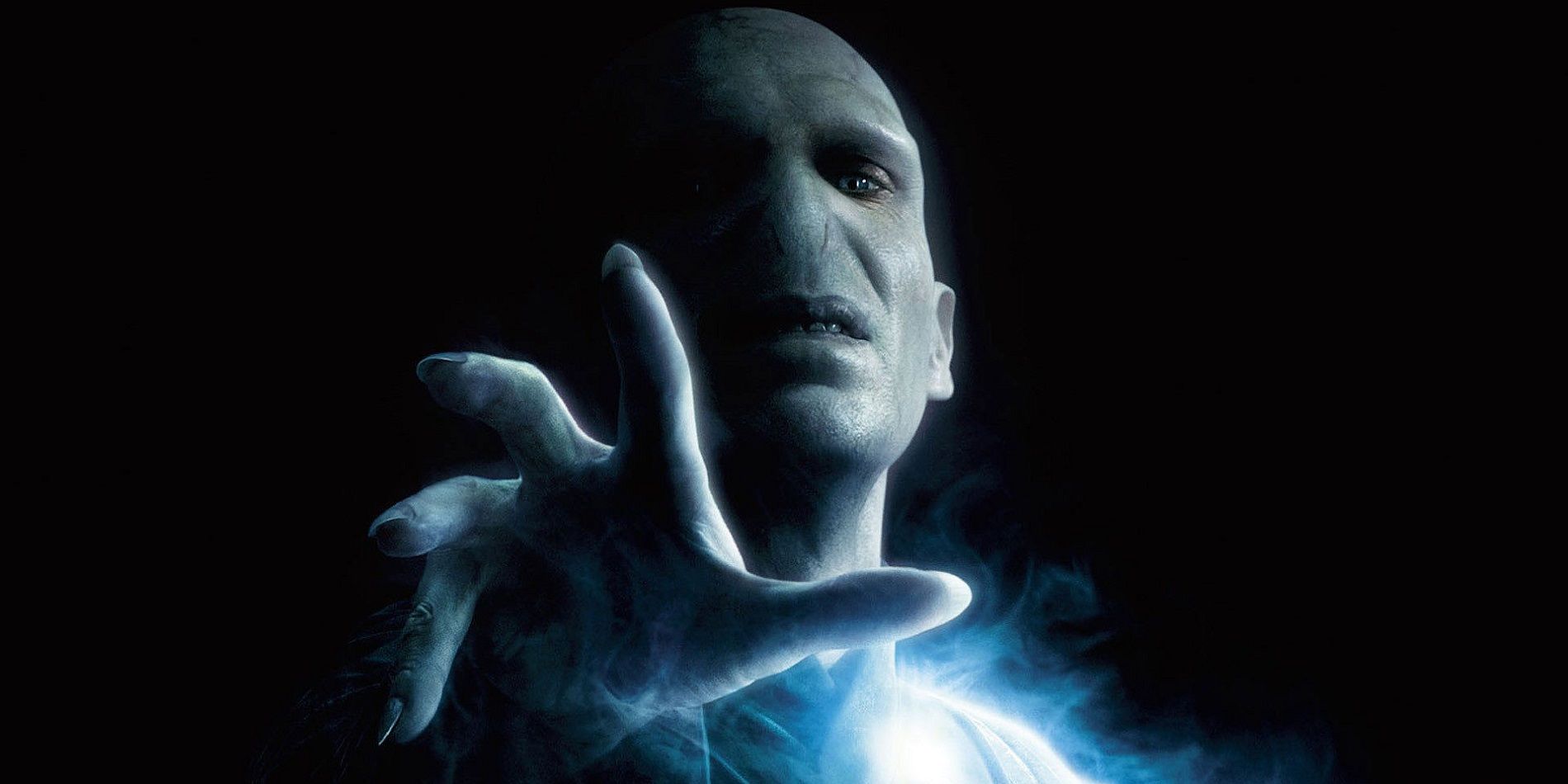WARNING: this article contains SPOILERS for Harry Potter and the Cursed Child
It’s been over a week now since Harry Potter and the Cursed Child made its debut at London’s Palace Theater and its script went on sale around the world, selling more than two million copies in as many days. This has been more than enough time to let everyone digest the story, and more than enough time to allow us to tally all of its biggest shocks and reveals.
First, though, a brief recap of its synopsis: the play kicks off with the scene that ended the Harry Potter novel series, showing 11-year-old Albus Severus Potter heading off to Hogwarts School of Witchcraft and Wizardry for the very first time. Much in keeping with Star Wars: The Force Awakens, the story puts its emphasis on the next generation of the characters following the footsteps of their famous parents (or not) while also giving the original characters more than enough to do (including the opportunity to provide something of a thematic resolution to their own story).
There’s much to unpack, so let’s get to it: here are the 15 Biggest Spoilers From Harry Potter And The Cursed Child.
15. The new magical status quo
Author J.K. Rowling has had ample time to fill everyone in on what the (main) cast of the Harry Potter books has been up to in the intervening 18 years (the novels span a timeframe of 1991 to 1998), thanks to the likes of interviews with the press and short stories that have periodically popped up over at her site, Pottermore. And then of course there's also the epilogue in the last book, Harry Potter and the Deathly Hallows, which is set in the year 2017, when Harry’s second son, Albus Potter, finally gets his chance to head off to Hogwarts.
What’s interesting about Cursed Child is how thoroughly it changes everything we thought we knew: Hermione Granger is minister of magic, Harry is the head of Magical Law Enforcement at the Ministry, Ron Weasley is the (apparently sole) proprietor of Weasleys’ Wizard Wheezes, Ginny Potter is the sports editor of the Daily Prophet, and Minerva McGonagall is still the headmistress of Hogwarts School of Witchcraft and Wizardry. What hasn’t changed, of course, are the characters’ marriages and children: Harry and Ginny have James Sirius, Albus Severus, and Lily Luna, while Rose and Hugo Granger-Weasley are the offspring of Ron and Hermione (though it should be noted that neither Lily nor Hugo are ever present in the play).
14. “Cursed Child” is a time-travel story
Although all the pre-release marketing for the play made much ado about it being set in the year 2017, the first setting trick that Rowling and her co-writers play on the audience is that Albus’s first year in Hogwarts only occupies the first few minutes of the story; the production very quickly skips forward to three years later, when he’s about to enter his fourth year. This is a very deliberate piece of both parallelism and foreshadowing, as we shall soon see.
But even this is something of a ruse. Although the rest of Harry Potter and the Cursed Child’s setting stays put in 2020, the action (along with the characters) actually jumps all around the timeline, thanks to the last remaining Time-Turner (they were all destroyed in Harry Potter and the Order of the Phoenix) being recovered from a former Death Eater by Harry and Hermione.
Yes, that’s right – the eighth and final Harry Potter story is a time-travel adventure, spending a great deal of time during the Triwizard Tournament in 1994-1995 (during Harry Potter and the Goblet of Fire), shuffling between several different alternate-realities in 2020, and then finally ending in 1981, a very important year in the Potter mythology.
13. A parade of familiar faces
Yes, there is a small cavalcade of new characters introduced in Cursed Child: Scorpius Malfoy, Draco’s son and Albus Potter’s sole friend; Delphini Diggory, the late Cedric’s cousin and the caretaker of his now-elderly father; and a number of new classmates who are meant to take the place of such former stalwarts as Dean Thomas, Neville Longbottom, and Draco’s goons, Crabbe and Goyle.
But thanks to the chronologically fluid nature of the play, the writers are able to summon a seemingly never-ending parade of familiar faces, giving this somewhat-remote epilogue to the Potter narrative a main connection to the seven-book story proper. Rubeus Hagrid, Bane (y’know, the centaur from the Forbidden Forest), the Durselys, Severus Snape, and, even, Dolores Umbridge all make at least a cameo appearance. And, even more interestingly, thanks to various dream sequences that Harry has throughout the play, some classic scenes from the original tale are reenacted, including that fateful 11th birthday when Harry discovers that he’s a wizard.
The best of these old-school cameos? The Trolley Witch, who ends up revealing the true extent of her magical powers. It’s too cool to spoil here.
12. Albus, the failure of the Potter legacy
It may not be easy to be Harry Potter, but, it turns out, it’s even harder to be his son. Being the offspring of the most famous member of the wizarding world produces a burden that is extremely difficult to shoulder, especially if one ends up being as slow to magic as Albus Potter turns out to be. In fact, he seems to have inherited nearly none of the attributes that his legendary father possesses, such as being able to influence the Sorting Hat’s decision-making process (he gets sorted into House Slytherin, unlike every other member of the Potter and Granger-Weasley families), being quick with a broom (Albus hates Quidditch, as it turns out), or being able to generate multiple lasting friendships (all he can do here is to befriend yet another social outcast, Scorpius, who is shunned by nearly everyone at Hogwarts due to the rumor that he’s secretly Voldemort’s son).
Rather than being his oasis, Hogwarts Castle ends up being his prison sentence. Not only do the other kids mercilessly taunt him with the name “Albus, the Slytherin Squib,” even his cousin Rose has abandoned him as her own popularity soars.
11. The heart of the play is the Triwizard Tournament
It may come as no surprise, given Cursed Child’s time-traveling nature, that the real heart of the story is set in the past (including its emotional ending in Godric’s Hollow on October 31, 1981). What may surprise readers, however, is just when its focal point is set: the Triwizard Tournament, which spanned from the fall of 1994 to the spring of 1995.
Why then and there? Well, for several different reasons, which peel away like the layers of an onion. Amos Diggery, Cedric’s resolute father, bursts in the Potters’ home in order to petition the head of Magical Law Enforcement to use his newly-acquired Time-Turner to travel back and save his son, Cedric, since too many people have already died to keep the Boy Who Lived alive (we learn here that those who perished at the Battle of Hogwarts are called the Fallen 50). But it turns out that the tournament is the key to Voldemort’s return. Should any basic element have changed during Cedric’s death and Voldemort’s rebirth, Harry ultimately fails in his quest to destroy all the Horcruxes and the once and future Tom Riddle reigns supreme, as Albus and his best (only?) friend, Scorpius, find out to their dismay.
10. The importance of character flaws
If there is one dominant theme in the Harry Potter series, it is the importance – if not the outright necessity – of character flaws. (Well, okay – perhaps an even more fundamental motif is the singular importance of choice [such as how Voldemort chose Harry to be the “Chosen One” over poor Neville Longbottom], but one could easily argue that the nature of one’s choice is the byproduct of his flaws.)
This gets serviced extensively in the play, as the writers really double-down on the pre-established examples from the older generation of characters (Harry, Ron, Hermione, etc.) in order to more fully highlight the theme amongst the younger generation (Albus, Scorpius, Delphini). To wit: when the boys change the proceedings of the first task of the Triwizard Tournament, Hermione ends up rebuffing Viktor Krum’s offer to go to the Yule Ball, which means Ron’s jealousy never gets set off, which, in turn, never provides the impetus for him to make any sort of move on the love of his life. In the present day of this particular alternate timeline, Ron is miserably married to Padma Patil, leading a boring life with no humor (or joke shops) but with lots of dominance and control.
An even better example: in yet another alternate reality, Neville is killed sometime after the tournament, which means he’s not present at the Battle of Hogwarts to slay Nagini, which is what allows Harry to have his ultimate duel with Voldemort – and win. Even the tiniest, seemingly most irrelevant of characters add up to become the most important of historical influencers.
9. Harry and Draco's blossoming friendship
When Albus Potter and Scorpius Malfoy disappear from the Hogwarts Express on the way to their fourth year, Harry, Ginny, and Draco (whose sickly wife, Astoria, unfortunately passes away in the early part of the play) are beside themselves with worry – and recriminations against the other. It’s more than just old tensions bubbling up to the surface again; it’s also the fact that Draco has a single-minded obsession with Harry officially refuting the persistent rumors of Scorpius’s true parentage, and Harry’s growing concerns over what he perceives as some sort of Death Eater resurgence (more on which in just a bit).
The resulting tensions reach their crescendo, but then, when both individuals are forced to admit the mistakes they’ve made as parents and in trying to protect their sons from the pressures and cajoling of the outside world, they find themselves reaching some sort of understanding that has always eluded them. When Malfoy makes the very tender confession that he was always jealous of the friendship Harry had with both Ron and Hermione – Crabbe and Goyle were always lackeys, not comrades – it seals the new deal. Harry and Draco, at long last, become honest, genuine friends, with their children leading the way in this new familial relationship.
8. Harry defeated by… Draco
Before forgiveness and honesty can be the new law of the land for Draco Malfoy and Harry Potter, however, there has to be a nadir in their 30-year relationship, and that low point manifests itself as a wizarding duel.
What’s great about this scene – besides seeing just how the theatrical wizards in London are able to realize such a bout of spells on-stage – is how it mirrors the characters’ various fights from all seven novels. The reflection quickly reveals itself to be an inversion, however, as Harry, slowed by his desk job, actually loses to Draco, who's apparently been keeping magically fit. It’s almost a rout for Draco, who only lets up on the attack when Ginny comes in and treats the two adults as if they’re squabbling teenagers once again.
This is more than just an interesting twist or final punctuation mark to their decades-long rivalry. It’s also the beginning of a perception reset for the audience in regards to Harry, as they start to realize that this character really isn’t the same one that they grew to love throughout the past decade-and-a-half. This Harry is older and wiser, but he’s still trying to learn how to deal with his still-present fundamental flaws, which are not only impacting his relationship with his son, Albus, but which are now bleeding out into the rest of the wizarding community, starting with Draco.
7. The last Time-Turner – and what it’s used for
When Harry confiscates the Time-Turner from Theodore Nott in the beginning of Cursed Child, the Ministry of Magic believes that it’s the absolute last device left in the United Kingdom (if not the world). What Potter didn’t realize is that Nott, who was in the same grade as the Boy Who Lived and whose father was a devout Death Eater, was actually working on constructing this new Turner specifically for Lucius Malfoy, who had given up his Dark Wizard days but who nonetheless still wanted to collect the finest Dark Arts relics imaginable. This initial attempt of Nott’s to create a Time-Turner was feeble – it was a prototype more than anything else, made of (comparatively) cheap materials and able to only transport its user into the past for a stretch of five minutes.
Nott’s second attempt was exactly what Lucius was looking for: made of gleaming gold and able to go back decades into the past indefinitely, he proudly passed it down to Draco upon his death. Draco, in turn, hands it over to Harry once their two sons are missing and are, presumably, up to no chronological good. (Draco’s opting to not use it even after his wife died is a testament to the strength of his character, which goes a long way to showing how he’s changed since Deathly Hallows.) Once the pair receives a signal from Scorpius and Albus in the past, they gladly use the device to save their children and set history to rights, once and for all.
6. Harry, the flawed parent
The boy who endured hardships past count and even (temporarily) sacrificed his own life to defeat Lord Voldemort, the most powerful Dark Wizard the world has ever seen, still has some pretty significant drawbacks. While we don’t see him as a parent to either James (who’s barely in the play) or Lily (who isn’t in it at all), we do get to see how he treats Albus, the only child who exists on a different wavelength from his father (and that’s even before he arrives at Hogwarts and fails spectacularly at nearly everything he does).
Ultimately, it is in his budding friendship with Draco that Harry finally realizes the truth of his relationship with Albus. There are two underlying reasons for why father and son seem to continually butt heads: firstly, more than the seemingly perfect James, it is Albus who is the most like Harry, which accounts for a great deal of the friction. Secondly, it is Harry’s own desire to rewrite his past in order to correct for his present – and Albus’s future – that has unwittingly placed a great deal of extra stress on the boy.
Once realized, Harry is able to see a path forward for reconciliation. But, first, there must be a cataclysmic confrontation in order to make this possible.
5. Harry’s frightful admission
Albus and Harry’s fraught relationship comes to a head right before Albus departs for his fourth year at Hogwarts. Giving each of his boys a gift for the new school year, he bequeaths his family’s legendary invisibility cloak to James and then passes on to Albus something which he thinks is even more dear and precious, the only possession he has from his parents: the old and frayed baby blanket that he was wearing just moments before his parents were murdered. When Aunt Petunia Dursley passed, she gave it to him, and he, in turn, wants to pass it along to his misunderstood son.
Albus, for his part, thinks his father is merely rubbing his greatness in his face, and he throws it back in Harry’s. The fight ends with Harry’s admission that he sometimes wishes Albus weren’t his son, something said in the heat of the moment but which is potentially irrevocable in its emotional consequence.
4. Snape’s farewell
In the second part of the play, Albus and Scorpius have accidentally created the worst possible world that they can think of: they managed to save Cedric’s life, but at the expense of Neville Longbottom’s and, therefore, Harry Potter’s. Voldemort is now the supreme ruler of the wizarding world, Dolores Umbridge is the headmistress of Hogwarts, Scorpius “the Scorpion King” is the most powerful student at school, and Albus – and the rest of his family – is non-existent.
But there’s still one good consequence from this nightmare parallel timeline: Severus Snape is alive and well, still teaching Potions and still secretly a member of the Order of the Phoenix, even though the only other two participants are Hermione and Ron (of course). When Scorpius manages to convince him of the falsity of this reality, the whole truth comes out regarding his original fate – including the part where Harry names his best friend after both Snape and Dumbledore, to honor what he has called the bravest man he’s ever known. Snape is touched at the homage. Flattered that it takes the Dark Lord to kill him, he gladly sacrifices his life again in order to ensure Scorpius has the opportunity to travel through time once more and to set things to rights.
It’s a tender and wonderfully deserved farewell that Professor Snape gets, and it almost makes the whole Voldemort-conquers-the-world thing thoroughly justified.
3. “I love you”
It’s not only Severus Snape who gets to have a final dénouement – Professor Albus Dumbledore also gets his chance to shine in the emotional sun.
After having a brief, somewhat tortuous conversation with Dumbledore’s portrait at Hogwarts (and after Professor McGonagall warns Harry to not invest too much into such interactions, as the portrait is only the thinnest of shadows of the original person) the former headmaster manages to sneak into his picture frame in Harry’s office as the latter is getting ready to go hunt throughout time for his son. It leads to a tense, terse conversation, in which Harry angrily declares, “Go. Leave. I don’t want you here – I don’t need you. You were absent every time it really counted,” which forces Dumbledore to be open and honest with Harry, to admit that he tried to protect himself from the pain that love inexorably causes – the same exact mistake that Harry is now making with his son, Albus. But it also leads to a simple confession, freely admitted: he did love Harry.
Harry, in turn, is moved to make the same confession: “I loved you, too, Dumbledore.”
“I know,” the former headmaster says in response, and then leaves.
2. Voldemort has a daughter
It wouldn’t be a Harry Potter story without the villain close at hand to the characters, intimately bound up in the plot’s action behind the scenes and revealed only at the end, when the Dark Arts are set to rise up again and crush the Order of the Phoenix (or Dumbledore’s Army, or whatever other name the resistance takes up).
In this case, it is none other than Delphini Diggory, who is revealed to not actually be related to the Diggorys. She has been systematically Confounding the aged Amos in order to get him to accost Harry about saving Cedric and to plant that particular time-traveling seed into the resentful mind of Albus. When Albus and Scorpius realize what such an alternation will cause (the return of Lord Voldemort) and refuse to attempt it any further, Delphini has no choice but to take matters into her own hands. Nothing will stop her from restoring her father to both life and power.
Yep, that’s right – she is the daughter of the Dark Lord himself, who secretly had an affair with the faithful Bellatrix Lestrange (her husband, also a true believer, was only too happy to have such an honor bestowed upon his family). Using Parseltongue, Delphini has been repeating the prophecies that the few remaining Death Eaters have been proclaiming, about the daughter being reunited with the father and allowing evil to flow across the land. The last remaining Time-Turner is the only key she sees to making such a prediction come true.
1. Voldemort returns – kinda
Throughout the play, there is a building tension as Harry’s scar starts to tingle for the first time in two decades. He tries to keep this from Ginny at first, but the reality behind the scar-induced pain is obvious for everyone around him to see: Voldemort is due to return.
Part of Child’s narrative is to keep viewers guessing as to how, exactly, this will play out. There are movements of various Dark Arts-related groups, such as the few remaining Death Eaters that first pop up. And then there is a series of recurring dreams that Harry has all throughout the play, which (usually) start off as reenactments of major scenes from the books (but which end with Voldemort’s voice surrounding the audience, inexorably building the tension). These are superseded, however, when Albus and Scorpius succeed in changing the timeline to restore Voldemort to power, and then all of this, of course, is capped by the revelation of Delphini’s true parentage.
The climax of the production finds the characters traveling back to the night when Voldemort was first stricken of his powers and Harry was allowed to live – October 31, 1981, in Godric’s Hollow. Harry, Ginny, Draco, and the others manage to arrive just in time to defeat Delphini, but are then faced with a choice: should they stop Voldemort from killing James and Lily Potter, thereby saving Harry (and, by extension, Albus) all the suffering that is due to unfold over the next 39 years?
They can’t, of course, and, in the end, all they can do is silently stand by and watch Harry’s parents be executed, ending the latest Harry Potter story exactly where it began.
---
Given how much Harry Potter and the Cursed Child has packed into its five-hour-plus running time, did we miss another nugget of a scene? Which was your favorite, and what do you make of this “eighth story”? Be sure to leave your thoughts in the comments section.
The script for Harry Potter and the Cursed Child is on sale now. The play is currently running at London’s Palace Theater until December 2017.

